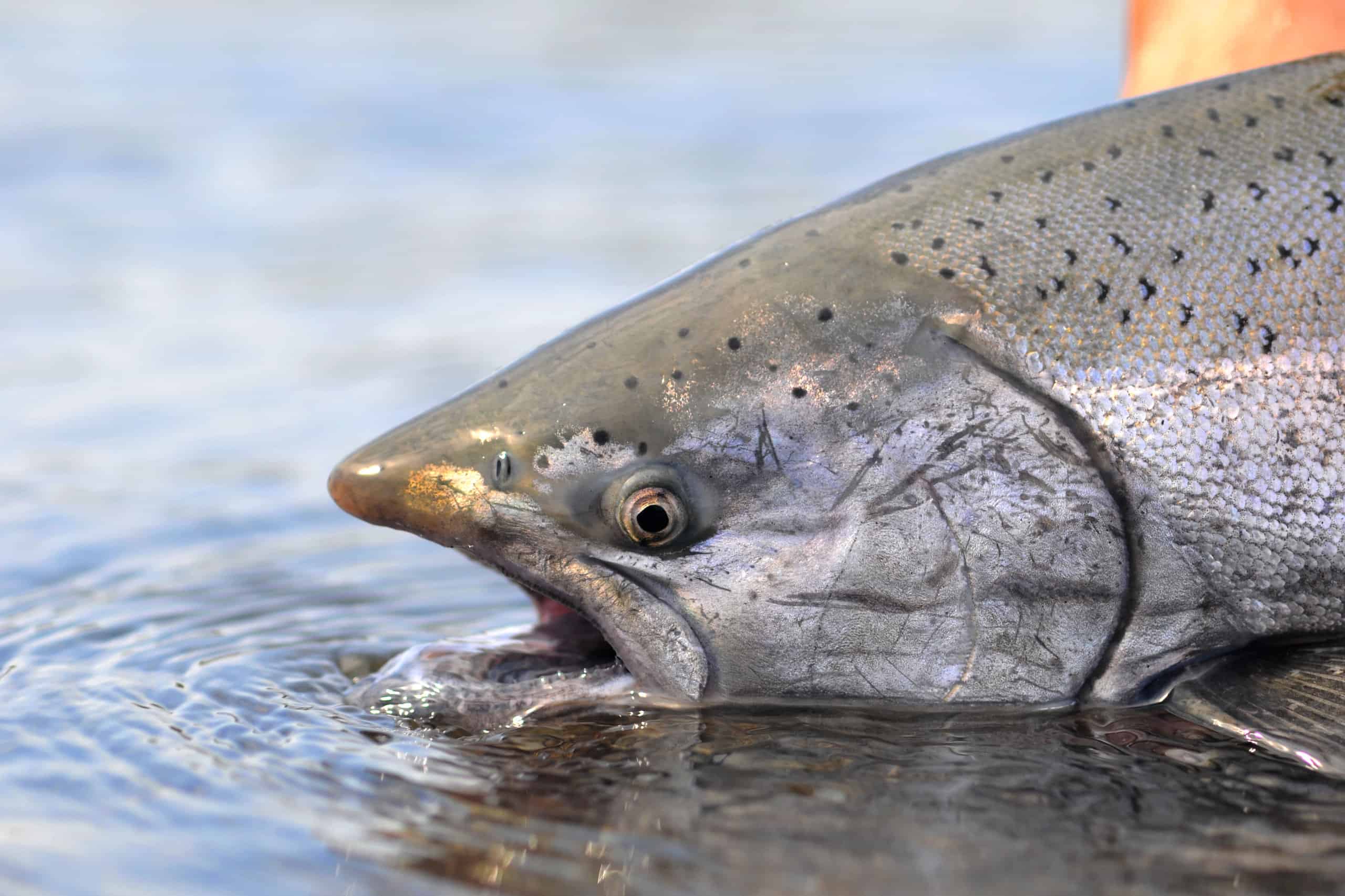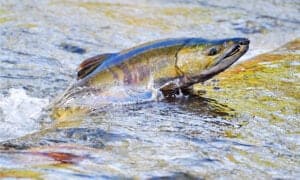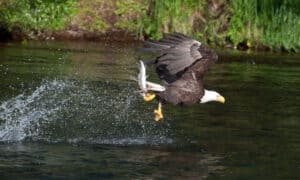Colorado is an outdoor person’s dream. Beautiful scenery, abundant wildlife, and a culture dedicated to protecting it all? Check! The animals that live in Colorado are amazing, especially some of the fish. Today, we are going to be looking at the king of all salmon, the aptly named King Salmon, and learn about its presence in Colorado. Specifically, we are going to learn about the largest king salmon ever caught in Colorado, plus a lot more. Let’s get started!
The Largest King Salmon Ever Caught in Colorado
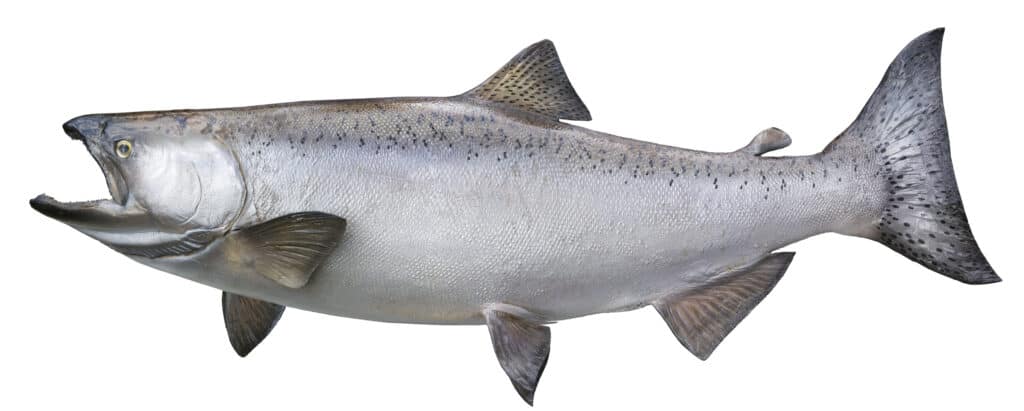
In Colorado, the largest king salmon ever caught weighed 11 pounds.
©Dan Thornberg/Shutterstock.com
The largest king salmon ever caught in Colorado was an 11 lb fish caught in 1989 in Williams Fork Reservoir in Grand County. The angler to catch the fish was Helen Eaton.
Generally speaking, Colorado isn’t a great place to catch salmon of any type. The state has extensive river and lake systems, but since it’s landlocked, it isn’t a spawning region. As a result, the ecosystem can’t support the fishing industry, and the salmon are stocked each year through the state by the Colorado Parks and Wildlife Department through a hatchery program. The lack of access to the ocean results in smaller overall salmon in the state, hence the smaller record size. In fact, an 11 lb king salmon is actually pretty small overall for the species, let alone a record. The largest king salmon ever caught (globally) comes in at a whopping 97 lbs 4 oz, for reference.
There are two other species of salmon in Colorado, the Atlantic salmon and the Kokanee salmon, both of which are also supplemented through hatchery programs. The state record for the Atlantic salmon is unknown, but the state record for the Kokanee salmon is 7 lbs 5 oz.
Where Do Salmon Live in Colorado?
Despite not having spawning grounds in the state, there are still salmon to be found, even if they are artificially placed. The best locations to find salmon in Colorado include:
- Blue Mesa Reservoir
- Carter Lake
- Chambers Lake
- Dillon Reservoir
- Eleven Mile Reservoir
- Grand Lake
- Green Mountain Reservoir
- Gross Reservoir
- Lake Granby
- Lake San Cristobal
- McPhee Reservoir
- Morrow Point Reservoir
- Ridgway Reservoir
- Ruedi Reservoir
- Shadow Mountain Lake
- Spinney Mountain Reservoir
- Taylor Park Reservoir
- Williams Fork Reservoir
- Wolford Mountain Reservoir
Aside from these lakes and reservoirs, there are also some rivers and streams that salmon can be found in, primarily in the Upper Gunnison River Valley.
King Salmon Overview
Distribution and Habitat
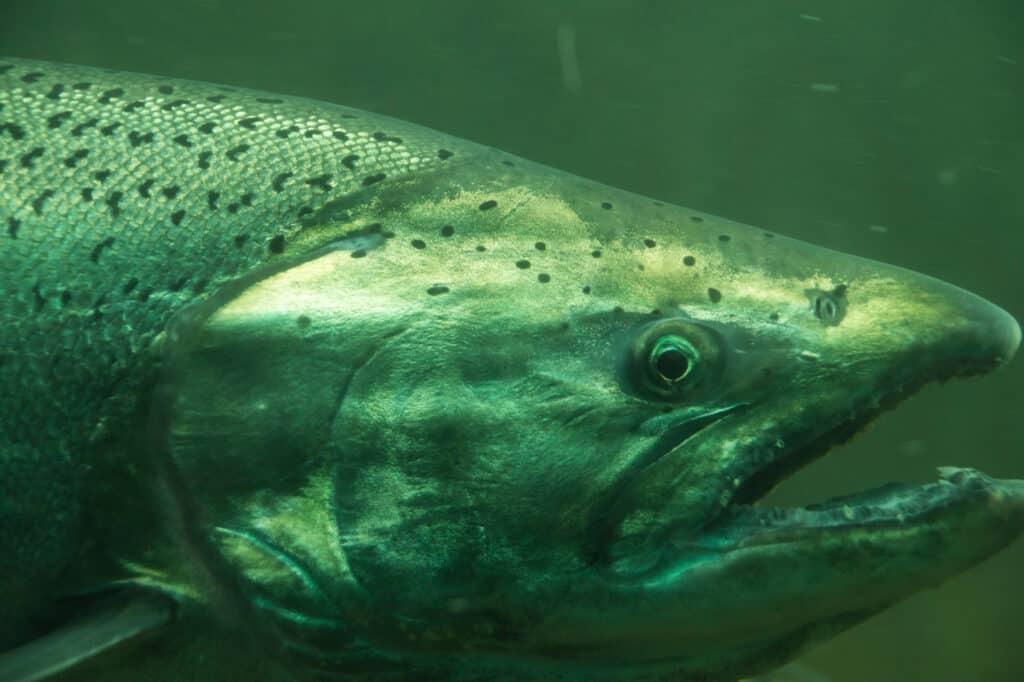
You can find the King salmon in both freshwater and marine environments.
©vladdon/Shutterstock.com
The King salmon (Oncorhynchus tshawytscha), also known as the Chinook salmon, is a species of Pacific salmon found in the northern Pacific Ocean and rivers discharging into it. It has a wide distribution and can be found from the Kamchatka Peninsula in Russia to central California in the United States. In terms of habitat, King salmon can be found in both freshwater and marine environments, with adults typically returning to their native streams to spawn.
Spawning
King salmon are known for their long-distance migrations and spawning habits. Juvenile fish typically spend one to five years in freshwater before migrating to the ocean, where they can spend up to five years before returning to their native streams to spawn. Once they reach their spawning grounds, they lay their eggs in the gravel and guard them until they hatch. After spawning, most adults die, while the offspring will remain in freshwater for one to five years before repeating the cycle.
Diet and Culinary Uses
In terms of diet, King salmon feed on a variety of prey, including other fish, squid, and crustaceans. As they mature, they tend to shift to a more piscivorous (fish-eating) diet, especially as they get larger.
In the culinary world, King salmon is highly valued for its rich flavor and high-fat content, which gives it a distinctive texture and taste. It is often used in a variety of dishes, including grilling, smoking, and sushi. It can also be canned or made into various products such as jerky and caviar, although king salmon isn’t canned as often as other less expensive species are.
Conservation
Conservation of King salmon is a concern in many areas due to habitat degradation, overfishing, and the impacts of hatcheries. Many populations of King salmon are listed as threatened or endangered under the U.S. Endangered Species Act. Efforts to conserve and recover these populations include habitat restoration, hatchery reform, and harvest management, but there is still a long way to go regarding the long-term protection of the species. They are an essential building block for almost all predators across the western part of North America, including creatures such as grizzly bears, eagles, and hawks.
Up Next:
Thank you for reading! Have some feedback for us? Contact the AZ Animals editorial team.

